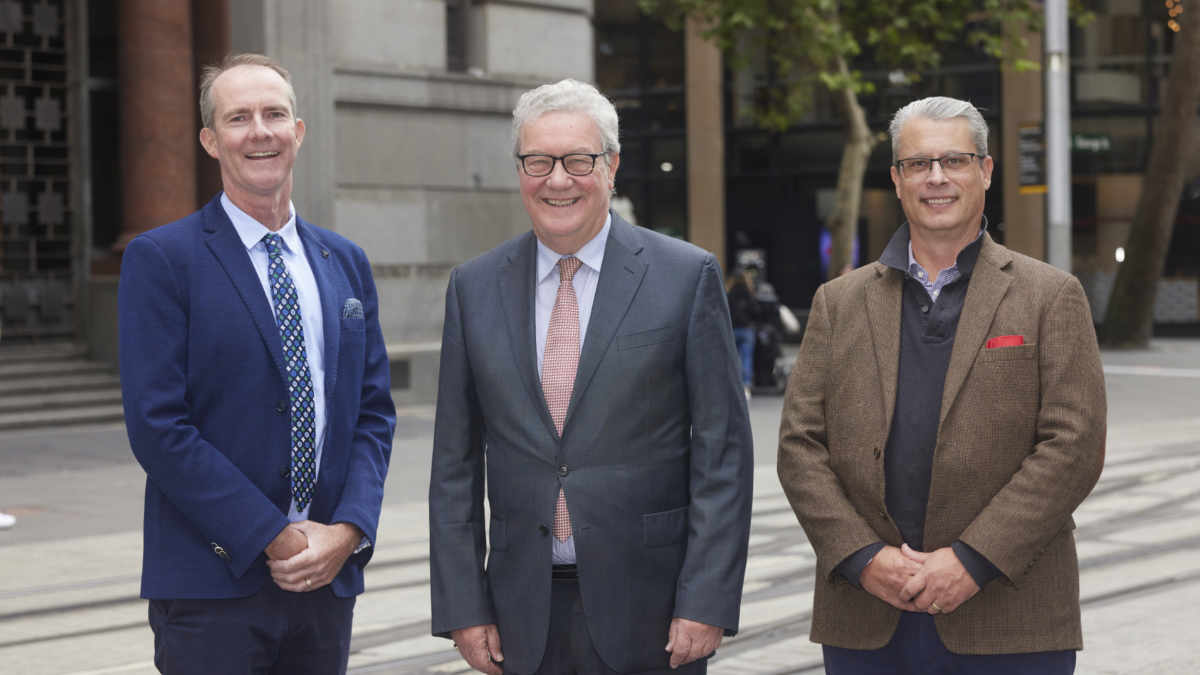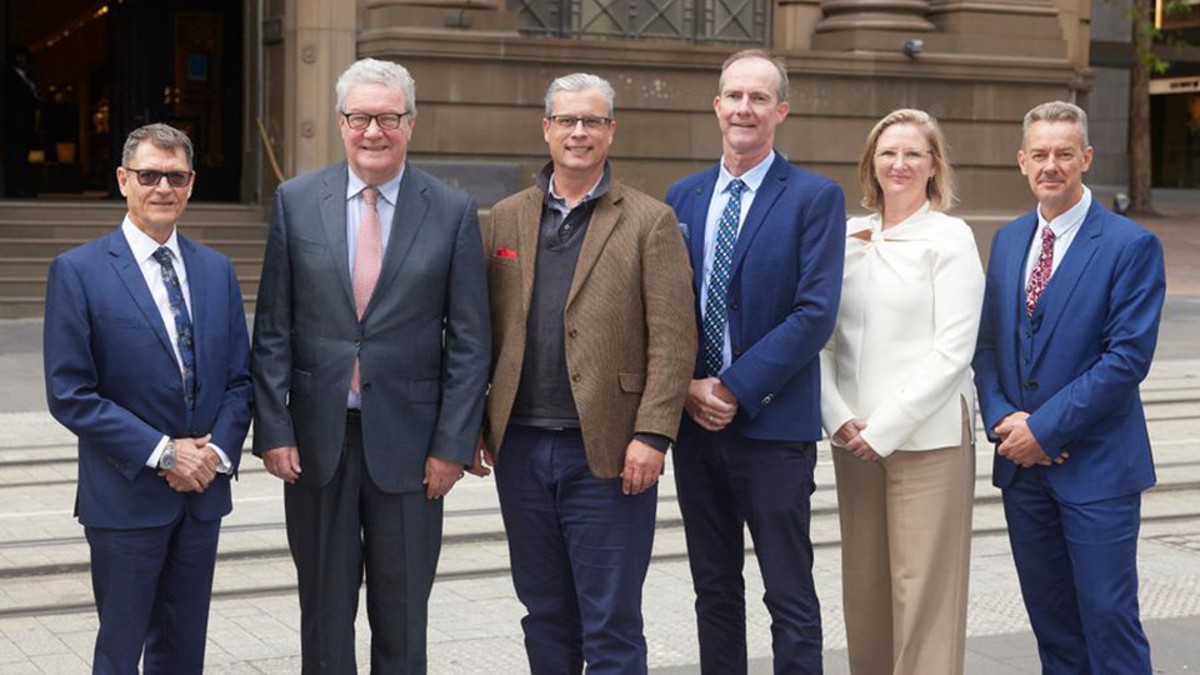IPO WATCH: This ASX newcomer is sitting on a very large natural hydrogen prospective resource with plans for low-cost production

Gold Hydrogen founders Neil McDonald, left, and Luke Titus, right, celebrate their company’s ASX listing with chair Alexander Downer. Image: supplied
Gold Hydrogen, which holds the largest tenure position over naturally occurring hydrogen in Australia on South Australia’s Yorke Peninsula and Kangaroo Island, is looking to play a part in the country’s low carbon and low-cost energy mix.
‘Gold hydrogen’ is hydrogen that occurs naturally via geological processes, which offers significant cost and emissions advantages relative to other means of production.
A treasure trove of data detailing accidental natural hydrogen discoveries by South Australian Department geologists in the 1930s is what led the decision of Gold Hydrogen’s (ASX:GHY) team of energy experts to jump into the fast-moving hydrogen space.

Chaired by the country’s longest serving foreign minister Alexander Downer, as well as resources exploration expert Luke Titus and managing director Neil McDonald, the company has been admitted to the Official List of ASX and will commence quotation at 11am AEDT on Friday, 13 January.
GHY raised $20m at 50c a share to continue exploration activities and begin drilling by Q3, 2023.
In an interview with Stockhead, chief operating officer Luke Titus says the company plans to twin the original bores that were drilled almost a century ago by using modern techniques and applying further techniques such as soil testing, airborne surveys, and seismic processing to validate the historical hydrogen occurrences for the drilling process.
Natural hydrogen of up to 90pc purity
“These wells were drilled in the 1920s and 1930s because the geologists were searching for oil and instead found these occurrences of gas to the surface, they walked away – it wasn’t what they were looking for,” he says.
State geologist at the time, Keith Ward, was sent out to collect gas samples and found accumulations ranging between 80 to 90 per cent hydrogen with no hydrocarbons, Titus explains.
“The bulk of the other gas is primarily nitrogen with 1 to 2 per cent CO2 and 1 to 2 per cent methane.
“When we go to do our exploration work, part of our process will be to collect new gas samples to understand the gas compositions further and how that varies around the fields because we have a number of different prospects and structures to drill.”
The Ramsay Project
Gold Hydrogen’s focus is on the flagship Ramsay Project, which sits on one granted Petroleum Exploration Licence (PEL 687) covering roughly 7,820km2 of ground.
The company also has seven other tenements in an exclusive application process across a further 67,512km2 footprint – making this the largest tenure position over naturally occurring hydrogen acreage in Australia.
Ramsay is host to an independently estimated 1.3bn kilograms of potentially recoverable natural hydrogen, several drill-ready targets and the historical wells which encountered 80pc natural hydrogen gas from depths of around 500m to 1,000m.
Down the track, an array of potential options exists for the monetisation of Gold Hydrogen’s resource including onsite electricity generation, pure hydrogen distribution, distribution to local ammonia plants, hydrogen transportation and storage applications.
Phenomenon occurs elsewhere around the world
While the data was buried in an archive and left forgotten, Titus says it wasn’t until people started finding these sites of ‘gold hydrogen’ deposits in several places around the world in recent times before exploration companies really started to take notice.
In 2012 a natural hydrogen bore in Mali, Africa was discovered and subsequently connected to a fuel cell to supply electricity to the nearby town of Bourabougu.
Natural Hydrogen LLC, a company based in the mid-west of the US is looking to commercialise it while sites have been discovered in places such as Oman, Spain, France, and Brazil.
A flurry of explorers have also since flocked to South Australia in hopes of grabbing a piece of the natural hydrogen pie.
Gold Hydrogen’s Neil McDonald says his company is the only company with historical discoveries.
“As first movers, we believe our acreage is the most prospective – no other company has tenure with occurrences of hydrogen that we know of yet,” he says.
Surging demand for ‘man-made’ hydrogen vs natural
Demand for man-made hydrogen surged some 50pc between 2000 and 2020 and is expected to grow from 90Mt to more than 200Mt by 2030, despite the expensive cost of production.
“All this demand is coming from man-made hydrogen but what we are saying is – we already have the hydrogen stored in the ground, we don’t have to make it,” McDonald explains.
“We assume from our internal calculations that we could produce hydrogen at very much lower cost than other existing hydrogen production.
“To put that into perspective, green hydrogen at the moment costs around $6 a kilogram before transportation.
“We are quite excited to be working on something like this just as the world is beginning to move towards a net-zero, low carbon future.”
This article was developed in collaboration with Gold Hydrogen, a Stockhead advertiser at the time of publishing.
This article does not constitute financial product advice. You should consider obtaining independent advice before making any financial decisions.
Related Topics

UNLOCK INSIGHTS
Discover the untold stories of emerging ASX stocks.
Daily news and expert analysis, it's free to subscribe.
By proceeding, you confirm you understand that we handle personal information in accordance with our Privacy Policy.








